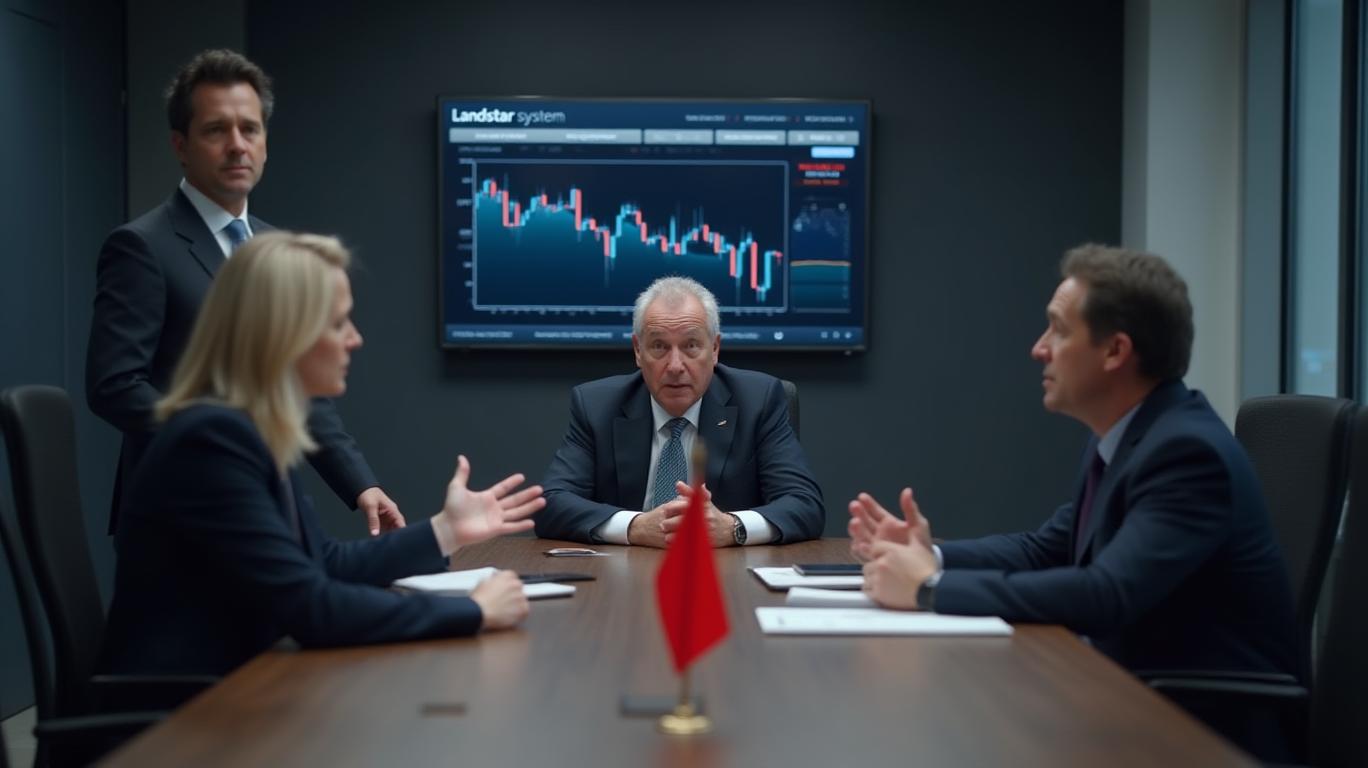Landstar System (LSTR): Navigating a Perfect Storm of Risks and Declining Prospects
Landstar System (LSTR), a leading provider of transportation and logistics services, faces a confluence of challenges that have analysts and investors bracing for underwhelming performance in 2025. From rising insurance costs and supply chain fraud to weak demand and valuation concerns, the company’s recent guidance cuts and operational headwinds paint a bleak picture. Here’s why investors should proceed with caution.

Earnings Guidance Cut Signals Deepening Operational Struggles
LSTR slashed its Q1 2025 EPS guidance to $0.90–$0.95, down sharply from the initial $1.05–$1.25 range. The primary culprit? Soaring insurance and claims costs, driven by cargo theft and truck accident claims. Compounding the issue is a newly uncovered supply chain fraud case, which could further reduce Q1 EPS by $0.35–$0.50 due to impaired receivables. While the fraud—unrelated to LSTR’s core North American truckload services—hasn’t yet accounted for potential recoveries, its impact underscores the risks of third-party exposures in a complex logistics ecosystem.
Operational Headwinds: Volume Declines and Revenue Pressure
Despite a strong February, LSTR reported a 4% year-over-year decline in truckloads hauled during the first eight weeks of Q1. Van and platform equipment loads fell by 6% and 5%, respectively, though other segments saw a 26% increase. March’s performance returned to seasonal norms, but revenue per load growth remains stagnant, a critical issue for profitability.
Analysts highlight broader industry challenges: excess truck capacity, driver shortages, and softening freight demand. These factors are expected to keep truckload demand flat or declining by 2–7% YoY in 2025, further squeezing margins.
Valuation and Sentiment: A "Strong Sell" Consensus
LSTR’s stock trades at a forward P/E of 22.09x, above both the industry average (20.13x) and its five-year median (21.75x). This premium valuation contrasts sharply with its deteriorating fundamentals.
Zacks Investment Research has assigned a “Strong Sell” rating, citing elevated costs, the fraud’s financial toll, and structural industry headwinds. The stock has already fallen 19.4% year-to-date, underperforming nearly all peers and hitting a 52-week low of $137.49.
Analyst and Balance Sheet Outlook: Caution Dominates
While LSTR’s balance sheet remains solid—with a current ratio of 1.96 and a 21-year dividend streak—analysts remain skeptical. Goldman Sachs and Truist Securities have cut price targets, citing risks like tariff uncertainties and rising insurance costs. Even Benchmark, which maintained a “Hold” rating, lowered its EPS estimates to reflect the guidance cut and ongoing pressures.
The supply chain fraud’s full impact remains uncertain, as potential recoveries via insurance or legal actions could mitigate losses. However, until clarity emerges, investors are likely to remain skittish.
Conclusion: High-Risk, Low-Reward for LSTR Investors
Landstar System’s combination of earnings volatility, operational missteps, and industry-wide challenges paints a high-risk profile. With Q1 EPS now expected to drop by up to $0.50 due to the fraud and insurance costs, and truckload demand projected to decline further, the near-term outlook is grim.
The stock’s 19.4% YTD decline and valuation premium relative to its fundamentals suggest investors are already pricing in these risks. While strategic moves like expanding heavy-haul and cross-border Mexican transport services offer long-term upside, they are unlikely to offset the near-term pressures.
For now, LSTR appears best suited for speculative investors with a high tolerance for volatility. Mainstream investors may want to wait for clearer visibility on cost controls, demand recovery, and the fraud’s resolution before considering a position.
In short, Landstar System’s “perfect storm” of risks—operational, financial, and macroeconomic—underscores its status as a high-risk, low-reward investment in 2025.


_442a2dcc1749832873286.jpeg)
_e68fac6d1749831664430.jpeg)






